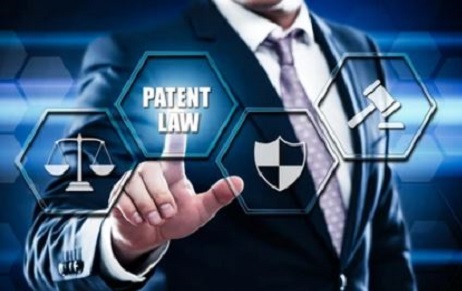Introduction What is Artificial Intelligence? Creating computer systems capable of carrying out activities that need…
Intellectual Property Rights in Digital Advertising: A Legal Analysis and Strategies
Introduction
Advertising is a powerful tool that allows businesses to communicate their vision, value, and product to the consumers. Conventionally, it was just limited to mass media platforms such as ads in newspapers, pamphlets, radio, or television, where content was limited to a local level and easy to control. But presently, advertising has undergone drastic change in its medium used with the advent of the internet. Currently, apart from the use of conventional media, there are also digital media like social media pages (LinkedIn, Instagram, WhatsApp), search engines (Google Ads, Bing ads), e-mail ads, video platforms (YouTube), algorithms used to advertise. These ads have reached a global audience. Digital advertising foster innovation and creativity but have also brought several legal and ethical challenges. [i]
Intellectual property rights play an important role in safeguarding the core elements of advertising, from brands identity to creative campaigns. These rights ensure that original content, invention, and design are safeguarded. Presently, advertising is not just a tool used by businesses, but advertising is an industry with its own rights.[ii] So, a crucial question arises regarding whose rights are being protected? Advertising agency or company(brand). It depends upon a contract between the parties who mutually decide it. In the absence of a contract, the creators (ad agency) hold the IPR. For instance, section 17 of the Copyright Act, 1957[iii], says the author of a work is considered as first owner unless the work is created under a “contract of service’’. There are also two major types of rights that are provided: moral and economic rights. Moral rights remain with the creator rights whereas economic rights are transferable upon the payment of royalties.[iv]
The intersection of IPRs and digital advertising raises several questions which this blog aims to resolve:
- How do intellectual property rights protect digital advertising?
- What challenges arise with protecting advertisements in the digital sphere?
- What strategies can businesses use to safeguard their intangible asset?
This blog delves into these intricate questions, offering insight into IP protection for digital advertisements.
Understanding IPR in Digital Advertising
Intellectual property law protects rights of creators. It includes the right to manufacture, use, and disseminate the creation. In the context of digital advertising, it protects the original and creative expressions that form the basis of advertising campaigns. The elements of good advertisements are likely to be copied by others. It can be headlines, visuals (images, graphics, colour scheme), call to action, branding like original slogan, jingles, or logo etc. The interaction of creativity, technology and IPR is very complex and is assess by multi-facet approach including law of contract, technology law, and media law etc. But in context of IPR it can be protected through various ways, such as copyright, patent, design etc.
Copyright protection in digital advertising[v]
Copyright protects the original artistic, literary, and musical work. It gives authors the exclusive right to reproduce, distribute, and adapt their work. In India, it is governed by the copyright act, 1957. The protection typically lasts for the creator’s lifetime plus 60 years after death. The creative expression is automatically protected as soon as it meets the criteria of originality. It does not necessitate registration.
In the case of advertising, it protects the image, music, video, script, and every other distinguishable and unique content. For example, A, an ad agency creates a video for a brand x. If another company uses the same video to advertise its own product by distorting it. It constitutes copyright infringement.
In case of copyright infringement, the rightful owner can ask for remedies like injunction or damages under section 55 of the Copyright act, 1957. Additionally, it can also seek remedies under section 66 of the Information Technology Act, 2000[vi] for unauthorized copying or distributing copyrighted content in electronic form. Furthermore, it can even file takedown notices under the Digital Millennium Copyright Act [vii]to infringers.
Trademarks protection in Digital Advertising
Trademarks protect symbols, names, logos, and slogans that distinguish a brand or product. Logos and taglines used in advertisements are trademarked to ensure exclusivity. Companies often include their trademarks prominently in digital ads to build brand recognition.[viii] Protecting these trademarks ensures the integrity of the brand and avoids its confusion among consumers. For example: A competitor creates a fake Instagram page using Party A’s logo to deceive customers. This constitutes brand jacking, actionable under the Trademarks Act. The
Trademarks Act, 1999[ix] provides protection for registered trademarks for 10 years, renewable indefinitely in India.
In digital advertisement the infringement can be of following types[x]:
| Types | Definition | Example |
| Domain Squatting | Registering domains like a brand name to extort money under its name | Using “tatasonsabc” to mislead audience that it is TATA’s website |
| Brand jacking | Impersonating a brand to mislead consumers | Creating a fake social media account for brand to fool others |
| Logo alteration | Modifying a logo to make it like another’s trademark | Creating a logo resembling apple’s half bitten fruit with same colour scheme |
| Unauthorized Co- branding | Using trademark name or logo to associate it with another brand | Using Mickey mouse to promote one brand. |
Remedies in case of infringement
Under the Trade Marks Act, 1999, remedies for trademark infringement in the context of digital advertising include civil, criminal, and administrative measures. Section 135 provides for civil remedies such as injunctions to stop unauthorized use of trademarks in online ads, damages, or account of profits to recover losses or illegal gains, and orders for the removal of infringing ads from digital platforms. Criminal remedies under Sections 103 and 104 penalize the use of counterfeit trademarks in online advertising with imprisonment (up to 3 years) and fines (up to ₹2 lakh). Additionally, trademark owners can request platform operators and regulatory authorities to take down infringing digital content and block counterfeit advertisements under intermediary liability frameworks.
Patents protection in Digital Advertising
Patents protect new inventions and technological advancements. Under the Patents Act, 1970[xi], a patent is granted for 20 years from the date of filing, provided the invention is novel, useful, and non-obvious. Advertising techniques, tools, or methods can also be patented if they meet these criteria.
Examples of Advertising Innovations Protected by Patents:
- Algorithms for Ad Placement: Algorithms that analyse user behaviour to deliver targeted ads can be patented. Although algorithms are excluded from patentability under section 3(k) but algorithm which that solve technical problem can be patented
- Interactive Ads: Ads that let users engage with products virtually, such as augmented reality (AR) or virtual reality (VR) ads, can be patented.
- Dynamic Ad Content Delivery: Processes that customize advertisements in real-time based on factors like user preferences, location, or weather conditions can be patented. For instance, delivering weather-specific ads—like promoting umbrellas during rain or sunscreen during sunny weather.
These are unique invention in field of advertising, hence are patentable.
Software and Patentability:
Section 3(k) of the Patents Act excludes “a mathematical or business method or a computer programme per se or algorithms” from patentability. However, Indian courts have interpreted that if a software-based invention demonstrates a “technical effect” or solves a “technical problem,” it may be patentable. For instance, in Ferid Allani v. Union of India[xii], the Delhi High Court recognized that inventions providing a technical contribution are not merely computer programs per se and can be considered for patents.
Importance of Patents in Advertising:
Patents protect the innovative backbone of advertising by ensuring that technologies, processes, and systems powering digital campaigns are safe. They give businesses a competitive advantage through exclusive rights to use, license, and monetize inventions. This is not only a legal way of protection but also motivates further innovation in the advertising world.
Remedies in case of infringement:
Remedies for patent infringement under the Patents Act, 1970 include injunctions (both temporary or permanent) and damages or account of profits under Section 108. The court can also order the seizure, forfeiture, or destruction of infringing goods or materials used. Section 118 penalizes false claims of patent rights with a fine of up to ₹1 lakh. Section 107A provides exceptions under given conditions, such as use for research, which do not amount to infringement.
Trade Secrets protection in Digital Advertising
Trade secrets, unlike other types of intellectual property, do not get official registration for protection. This leaves them open to risk. Their worth often serves as the foundation of a company’s edge over competitors. For example, a new algorithm that spots consumer likes and dislikes based on behaviour patterns. This kind of tool can cause a revolution in how companies plan their ads. To keep these secret businesses, depend upon complex in-house rules. These include tight controls on who can access data, and teaching workers how to keep things under wraps.
Companies that keep their technologies or methods under wraps can stay on top in the market without showing their special tricks to rivals. For instance, using AI tools to customize content for each user. However, businesses must ensure that trade secrets are backed by agreements, such as non-compete and non-disclosure clause agreement, to prevent leaks that could undermine their strategic advantage over others. [xiii]
Challenges in Protecting IP in Digital Marketing
Despite robust IP laws, marketers face several challenges in the digital space:
Easy replication and misuse: One of the most serious threats in the digital environment is the ease with which images, videos, algorithms, and other content can be taken without authorization with just few clicks and disseminated all over the world on internet. Most often, these sorts of activities go unnoticed until grave impact has been inflicted upon the image of the original creator, or the value of his/her brand is diluted.

Problems of Jurisdictional: Internet have no boundaries. This means material created in one country can be assimilated, duplicated, and abused in another country, sometimes in places where IP protection is not strictly enforced. For instance: A company operating in India is likely to have its IP violated in relation to countries where enforcement mechanisms do not effectively exist. This global fact makes the enforcement of the IP right’s more difficult as the enforcement is bound to several jurisdictions and legal systems, and that could make the legal action to be gradual and expensive. Though there are international regulatory body and treaty governing intellectual property rights setting up minimum standards protection but they are currently not uniformly enforced in all developing nations.
Case law: HT Media Ltd. & Anr. v. Brainlink International, Inc.[xiv] (2021) wherein HT Media, an Indian company, filed a suit against Brainlink International, a U.S.-based entity, alleging trademark infringement through online advertisements accessible in India. The Delhi High Court exercised jurisdiction, emphasizing that if a website targets Indian users or has a substantial impact in India, Indian courts can assume jurisdiction. This case underscores the complexities of cross-border IP enforcement in the digital age.
Ambiguity Around Fair Use: Additionally, vagueness of fair use adds a further level of difficulty. Fair use allows for limited use, for instance, of copyrighted material to the purposes of criticism, comment, reporting on new material, teaching, scholarship, or research. Yet the boundaries of fair use are very ill defined and open to misconstruction, which leads to frequent litigations. A work which is claimed to be legally permissible fair use by one side could be the target of protest by an opposing side, generating grievances and litigation, both of which are subject to protracted time and expense.
Case law: Consim Info Pvt. Ltd. v. Google India Pvt. Ltd.[xv] (2012) wherein Consim Info, operating matrimonial websites, sued Google for allowing competitors to use its trademarks as AdWords, leading to advertisements appearing in search results. The Madras High Court held that unauthorized use of a trademark must meet specific conditions to be considered “nominative fair use,” including necessity for product identification and no suggestion of sponsorship. The court’s analysis highlights the application of fair use in digital advertising contexts.
The Indian law does not provide for rigid test but for fair use but evaluate it on case-to-case basis.
Strategies for Safeguarding IP in Digital Marketing
To overcome these challenges, businesses must adopt a combination of proactive and reactive measures[xvi]:
Registering IP: Registration of intellectual property strengthen the grounds for ownership; this creates a real foothold during litigations. Other tools include reverse image search and watermarking that can be relevant for monitoring the unauthorized usage of advertisements. Some audits on online platforms may help reduce the chances of infringement.
Educating Teams: Educating teams about IP rights is another important step. Marketing teams need to be well-versed in the legal requirements related to IP to ensure that their campaigns do not infringe on others’ rights. Regular training sessions and guidelines can help inculcate a respect for IP within the organization. This proactive step can minimize the risk of unintentional violations and fostering an environment where creativity can flourish without legal disputes.
Utilization of Technology: By using Digital Rights Management (DRM) systems to control the use and distribution of digital content. DRM systems help to, control the use and distribution of digital content, ensuring only individuals who have been authorized will have access and use of the material. These technologies prevent access to material, tracking its usage, and locking it from access, so making it difficult to copy or circulate. By including DRM, companies can better protect their advertising.
Actively Enforce Rights: Finally, actively enforcing IP rights is important to give deterrent effect to future violations. When infringements are detected, immediately taking legal actions, such as filing notices or seeking for injunctions can send a strong message mind of violators and potential infringer thinking to copy.
By using policies stated above can provide strong layer of protection against the challenges concerning IP rights digital environment. Pursuing the policies above would provide robust protection for organizations against the concerns of IP protection in the digital environment. This mix sort of approach will not only fortify company’s creative works but will also sustain an organization’s brand, thereby ensuring success in long run in this competitive world.
Conclusion
The emergence of digital advertising helped businesses connect with global audiences, but it also opened creative assets up to glaring propensities for abuse. IPR acts as a foundation to protect these valuable creative assets of the business by ensuring fair competition and not to lose the integrity of advertising campaigns.
It provides this protection through is arms: copyrights, trademarks, patents, and trade secrets. IPR build a secure legal framework that encourages innovation and creativity.
However, the hurdles of easy replication, jurisdictional conflicts, and blur boundaries of fair use, points out the need for companies to adopt a multifaced approach. Strategies such as registering IP assets, educating teams, utilizing upcoming technology for security, and enforcing rights actively can rduce the risk.
Ultimately, the blog highlights the double role of IPR: not just as a legal safeguard, but as a strategy provider for long-term success in this dynamic and competitive world of digital marketing. By prioritizing IPR, companies can confidently innovate, build brand value, and thrive in the digital era.
Author: Sahil Gupta, in case of any queries please contact/write back to us via email to chhavi@khuranaandkhurana.com or at IIPRD.
[i] Sanjeev Dagar, Intellectual Property Rights and Its Influence on Digital Marketing, Legal Service India, available at https://www.legalserviceindia.com/legal/article-15429-intellectual-property-rights-and-its-influence-on-digital-marketing.html (last visited Dec. 11, 2024).
[ii] World Intellectual Property Organization, Managing Intellectual Property in the Advertising Industry: Creative Industries – Booklet No. 5, World Intellectual Property Organization (WIPO), available at https://www.wipo.int/publications/en/ (last visited Dec. 11, 2024).
[iii] The Copyright Act, No. 14 of 1957, India Code (1957), available at https://indiacode.nic.in/ (last visited Dec. 11, 2024).
[iv] Anubhav Pandey, Moral Rights of Authors under Indian Copyright Act, iPleaders Blog, available at https://blog.ipleaders.in/moral-right-author-indian-copyright-act/ (last visited Dec. 11, 2024).
[v] Aaron Hall, The Legal Aspects of Intellectual Property in Online Marketing, Aaron Hall Attorney Blog, available at https://aaronhall.com/the-legal-aspects-of-intellectual-property-in-online-marketing/ (last visited Dec. 11, 2024).
[vi] The Information Technology Act, No. 21 of 2000, India Code (2000), available at https://indiacode.nic.in/ (last visited Dec. 11, 2024).
[vii] Digital Millennium Copyright Act, 17 U.S.C. § 512 (2000), available at https://www.copyright.gov/ (last visited Dec. 11, 2024).
[viii] Aaron Hall, Understanding the Impact of Social Media on Intellectual Property Rights, Aaron Hall Attorney Blog, available at https://aaronhall.com/understanding-the-impact-of-social-media-on-intellectual-property-rights/ (last visited Dec. 11, 2024).
[ix] The Trademark Act, No. 47 of 1999, India Code (1999), available at https://indiacode.nic.in/ (last visited Dec. 11, 2024).
[x] Mailchimp, What Is Brandjacking? Mailchimp Resources, available at https://mailchimp.com/resources/brandjacking/ (last visited Dec. 11, 2024).
[xi] The Patent Act, No. 39 of 1970, India Code (1970), available at https://indiacode.nic.in/ (last visited Dec. 11, 2024).
[xii] Ferid Allani v. Union of India, 2020 SCC OnLine Del 1122, ¶ 12 (India), available at https://www.scconline.com/ (last visited Dec. 11, 2024).
[xiii] Aaron Hall, Understanding the Impact of social media on Intellectual Property Rights, Aaron Hall Attorney Blog, available at https://aaronhall.com/understanding-the-impact-of-social-media-on-intellectual-property-rights/ (last visited Dec. 11, 2024).
[xiv] HT India Ltd. v. Brainlink International, 2021 SCC OnLine Del 3331, ¶¶ 5–8 (India), available at https://www.scconline.com/ (last visited Dec. 11, 2024).
[xv] Consamin Info Pvt. Ltd. v. Google India Pvt. Ltd., 2019 SCC OnLine Kar 248, ¶ 9 (India), available at https://www.scconline.com/ (last visited Dec. 11, 2024).
[xvi] Aaron Hall, Understanding the Role of Intellectual Property in Digital Marketing, Aaron Hall Attorney Blog, available at https://aaronhall.com/understanding-the-role-of-intellectual-property-in-digital-marketing/ (last visited Dec. 11, 2024).



